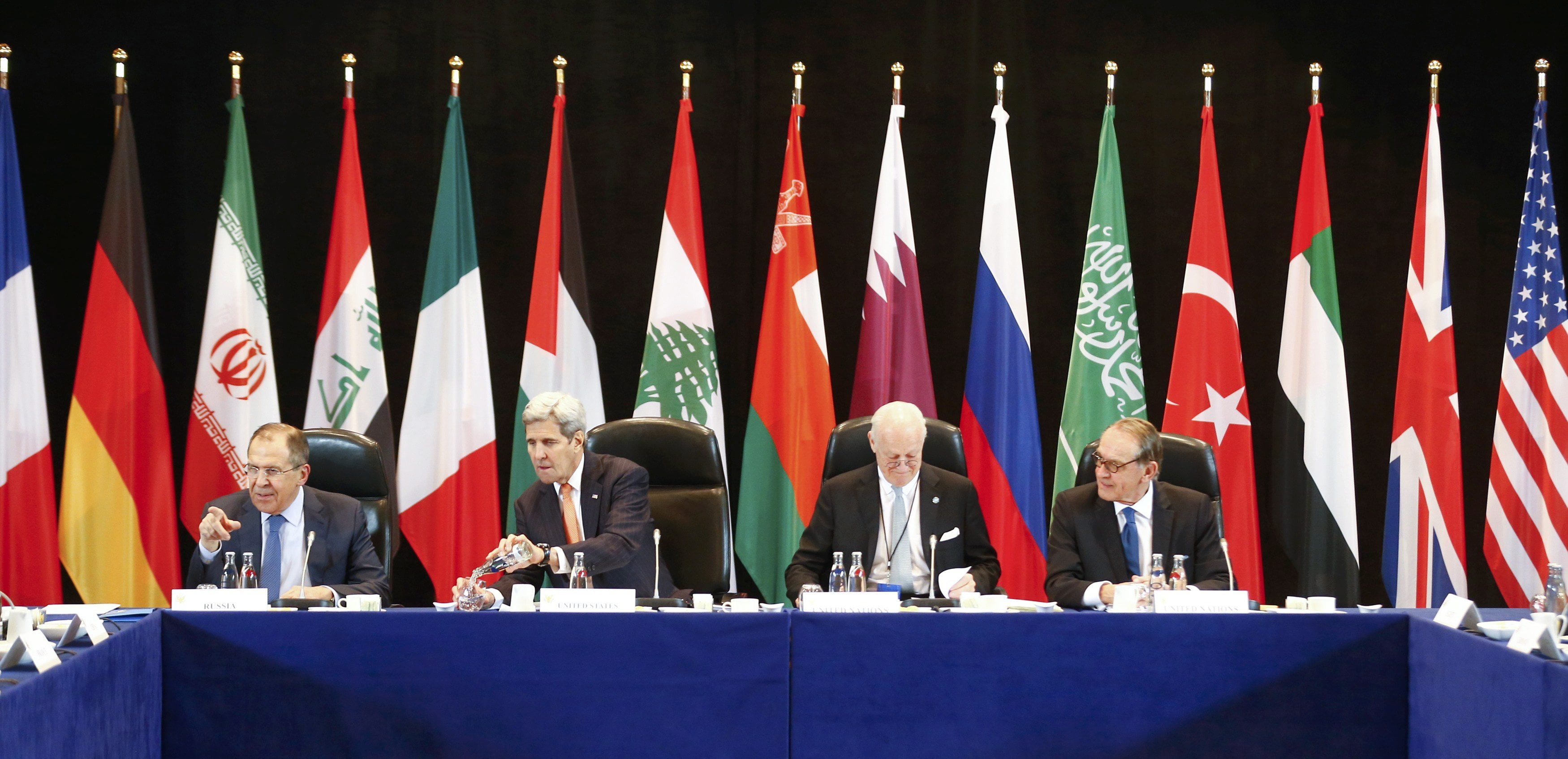The U.S., Russia and more than a dozen other countries met Thursday in Munich to discuss halting the fighting in Syria, while forces of President Bashar Assad are making some of their biggest gains against the opposition.
The fighting around Syria’s largest city of Aleppo has brought government forces closer to the Turkish border than at any point in recent years, routing rebels from key areas and creating a humanitarian disaster as tens of thousands of people flee. Because Aleppo has been an important stronghold for the rebels, the government advance is potentially one of the most significant shifts in the conflict.
A look at the key players and their next possible moves:
RUSSIA: Russia, which began its air campaign in Syria in late September, has proposed a March 1 cease-fire. But Moscow’s actions point to an all-out effort to wipe out the armed opposition to Assad, its longtime ally, in critical areas before then. The Russian Defense Ministry said its planes have hit 1,900 targets in the past week. Russia’s proposal is viewed by Washington as a cover for Assad to try to crush the rebels in the next three weeks, and so it is demanding an immediate cease-fire. The key for the Russians is helping government troops encircle Aleppo and recover the rebel-held town of Azaz on the Turkish border, which would choke off a key supply route for opposition forces.
SYRIAN GOVERNMENT: Syrian government forces will continue to take as much territory as possible, helped by the Russian airstrikes. In the coming weeks, they will press ahead with their goal of reaching the Turkish border and surrounding Aleppo, while the humanitarian catastrophe grows. A return to the negotiating table in Geneva on Feb. 25 for the resumption of U.N.-sponsored talks is unlikely while military gains continue.
UNITED STATES: As the Syrian government gains ground, will the U.S. escalate its role and arm rebels to try to reverse the situation? That seems unlikely. The U.S. has spent millions of dollars on programs to support and train moderate opposition fighters, but those programs have either failed or accomplished little. The Russian intervention has dwarfed the U.S. role to the point that many rebels now seem convinced that Washington and Moscow are somehow cooperating to keep Assad in power.
IRAN: The ambiguity of U.S. policy has emboldened another Syrian ally, Iran. It has sent its own Revolutionary Guards to Syria and has provided support to the Hezbollah militant group, whose fighters also are aiding Assad’s troops. That has upset U.S. allies in the region. With the lifting of crippling economic sanctions after Iran’s nuclear deal, Tehran sees no reason to question or halt its support for Assad.
SYRIAN REBELS: For the fractured opposition, there is a general feeling of a make-or-break moment as they get pounded from the air and the ground. What the rebels’ main backers of Turkey and Saudi Arabia do next will be a critical indication of whether they can recover from their current losses, particularly in northern and southern Syria.
TURKEY: As Assad’s forces near the Turkish border, Turkey may decide to invade northern Syria. Such a move would have the stated goal of clearing the Islamic State group from territory it holds along the Syrian side of the frontier. But it would also prevent the main Kurdish militia from filling the void. However, any Turkish incursion into Syria is risky and likely to lead to a clash with Russia.
SAUDI ARABIA: Saudi officials have offered to send ground troops to Syria to combat the Islamic State group in the context of the U.S.-led military campaign against the extremists. Such a move seems unlikely, however. The kingdom already is mired in a ruinous war in Yemen, and any direct Saudi engagement in Syria runs the potentially explosive risk of confrontation between one of the Arab world’s most powerful militaries and forces keeping Assad in power.
ISLAMIC STATE: Defense ministers from more than two dozen countries contributing to the war against the Islamic State in Syria and Iraq endorsed a U.S. plan for accelerating the campaign. U.S. Defense Secretary Ash Carter said nearly all participants at the Brussels meeting either promised new military commitments or said their governments would consider new contributions. But the chaos, splintered conflicts and threats of further external intervention makes a cohesive fight against the group less of a reality and plays into its hands. Rebel losses in Syria are likely to drive at least some fighters to join the Islamic State or other hard-line groups.
KURDS: The main Kurdish militia is exploiting the chaos in northern Syria to further its own goals and expand the areas under its control along the Turkish border. The group known as the Kurdish People’s Protection Units, or YPG, has also gone on the offensive. Its strategic aim is to link up the Kurdish-controlled areas to the west of the Euphrates River with an enclave in the east known as Afrin.



